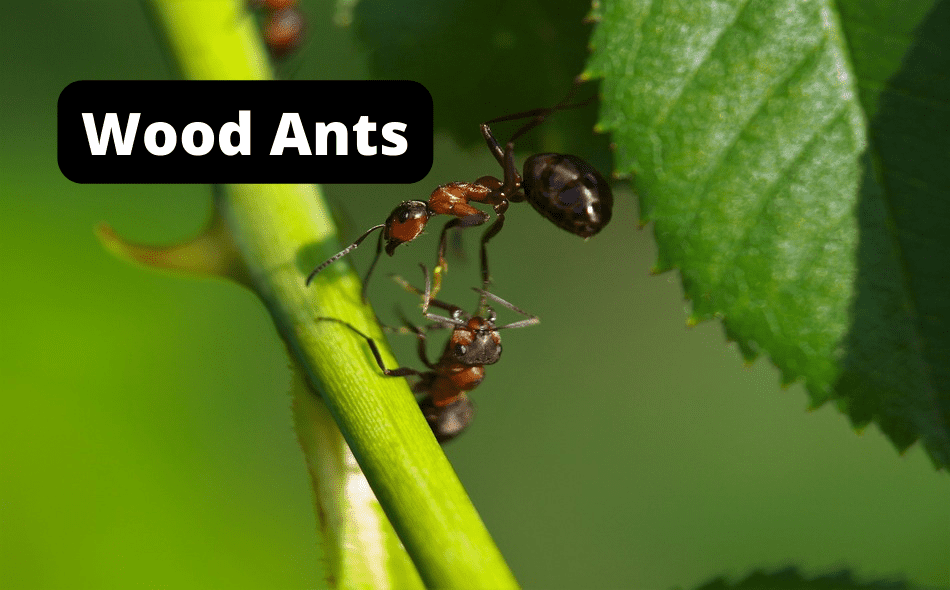There are so many different species that are under the broad term “wood ant” We hope this helps you out, as we see so many people using this term incorrectly, or only talking about carpenter ants.
When someone is referencing the wood ant, they’re talking about a category of ant species, not a specific species. The carpenter ant is a specific ant species that are included in wood ants, who get their name from building their nests in different wood debris.
What are Some Other Species of Wood Ants?
Some ants in the Formica Rufa Group include:
- Formica calviceps
- Camponotus chromaiodes
- Camponotus pennsylvanicus
- Formica ciliata
- Formica lugubris
- Formica opaca
- Formica paralugubris
- Formica polyctena
- Camponotus floridanus
- Formica pratensis
- Formica rufa
- Formica sinensis
- Formica truncorum
- Formica uralensis
- Formica yessensis
- Formica integra
- Formica integroides
- Formica laeviceps
- Formica mucescens
- Formica obscuripes
- Formica obscuriventris
- Formica oreas
- Formica planipilis
- Formica prociliata
- Formica propinqua
- Formica ravida
- Formica subnitens
- Formica coloradensis
- Formica comata
- Formica criniventris
- Formica ferocula
- Formica fossaceps
- Formica dusmeti
- Formica frontalis
- Formica aquilonia
What are some traits of Wood Ants?
Wood ants eat a wide range of invertebrates that the workers gather from the forest floor or the region around their nest.
Wood ants construct enormous nests out of soil, branches, twigs, or pine boughs.
For example, the red wood ant has been seen building mounds upwards of 15 feet in Spain.

This is why sometimes red wood ants are referred to as mound ants.
Another example is how carpenter ants build their homes in damp, rotten wood.
Most of the nuptial flights of wood ants (red wood ants, carpenter ants, etc.) take place in the springtime when they look to start their own colonies.
How To find Wood Ants
To find wood ants, you first have to understand what you’re searching for.
While these ants can be found in mixed forests, their nest-building skills are usually next level.
However, you don’t want to disturb those nests, as these mound ants do not like anyone close to their nest, and they will get aggressive.
The easiest time to find wood ants is when they are on the foraging trails, where you can find a queen who has just taken her nuptial flight.
What do wood ants look like
The wood ant species does have some distuinshable traits.
Some of these include their bigger size, unique colors, an orange and black shell, a darker head and enormous, powerful jaws.
Europe is filled with these ants, and In the United Kingdom, various kinds of wood ants might be hard to distinguish from other ant species.
Wood ants may claim vast territory thanks to their massive mounds.
In addition, the ant species is known for its aggressiveness and shooting formic acid toward its adversaries.
Wood ant colonies can have populations of above 100,000 workers!
What do wood ants eat?
Wood ants eat many things, and but seem to prefer to raise their own aphid colonies.
Aphid honeydew seems to be the prefferred food of these ants, although they also eat invertebrates, including bugs, arachnids, and whatever insect prey they can find.
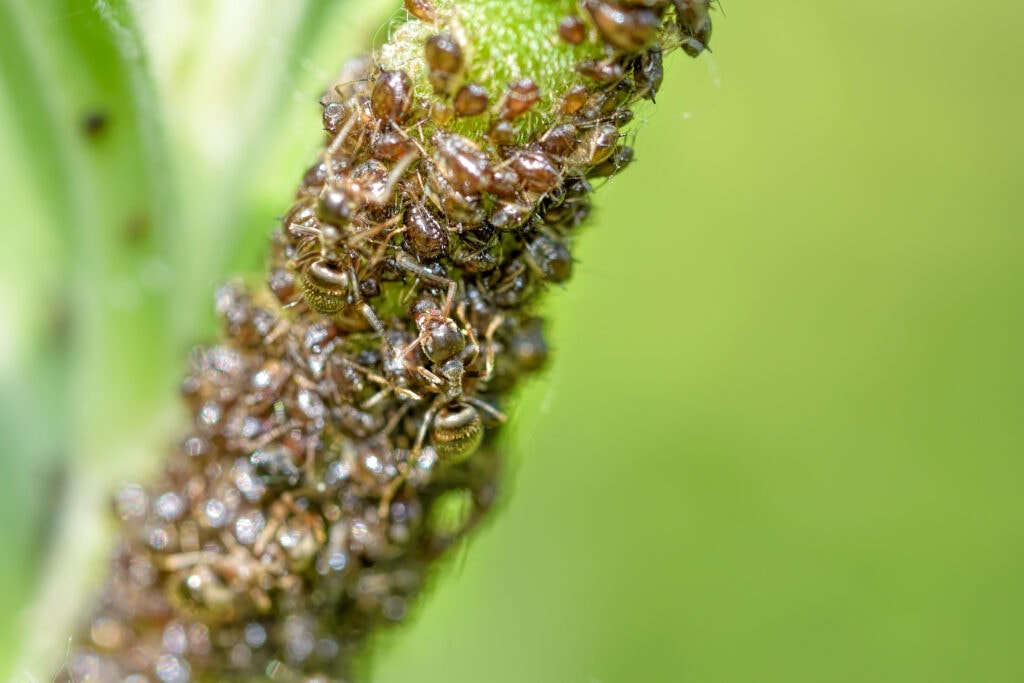
These ants are ravenous scavengers!
Foraging routes can be 100 meters long and extend multiple nests.
What’s even cooler about wood ants, is that the bigger their species is, the farther they will travel from their subterranean nest.
The act of foraging
Wood ants’ foraging behavior varies depending on their surroundings.
Wood ants have been observed tending and harvesting aphids, as well as preying on and competing with some other species for food.
They feed and hunt these insects, whether in the forest canopy, conifer needles, or the woodland foliage.
Wood ants prefer prey that resides in the regional canopy around their nest.
Still, as food supplies become low in the nest, they seek out other trees farther away from the colony.
This reduces the efficiency of food exploring, but due to the massive size of wood ant colonies, it’s usually all they can do.
Wood Ants Behavioral patterns
In some instances, wood ants can become violent, even to their kind.
There seems to be some ecological importance in owning the best foraging trails, even with “friendly” satellite nests.
The rivalry between members of rival nests typically happens early in the spring season, as hibernation has ended and resources need to be replenished.
Each year, fixed foraging pathways are strengthened, but aggressive behavior ensues if another nest’s ants start to go in them.
Ants use chemical cues to distinguish their nestmates.
If the ants around have different pharamone scents, these ants will quickly go to war with them.
Wood Ant Colony
Various species in the wood ant group have shown different forms of social engagement.
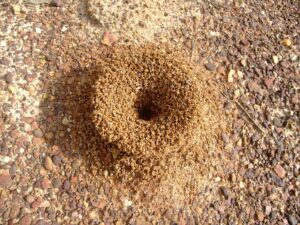
Several queens from different colonies develop extensive networks of linked nests in certain species. This is called Polydomy.
Polydomy is most commonly seen with red wood ants.
Others have single nests and are monogamous.
Monogynous females in wood ant colonies disperse by wing and start new colonies.
With the aid of a few worker ants, queens in monogamous nests create additional nests around the original colony.
Polygyny ants will not make a new queen leave.
Instead, she will stay within the colony and help it to grow.
This is one of the reasons why some of the mounds in the wood ant species grow to be so massive.
Splitting of the Nest
Wood ants usually have many nests so that they may migrate if their surroundings change drastically.
Several satellite nests are created as a result of the colony breaking.
Wood ants relocate for a variety of causes, including a reduction in food supplies, an assault by some other colony, or some changes in the status of the colony itself.
During this time, workers, queens, as well as offspring are transported from the parent colony to the daughter colony in a hierarchical manner.
The movement procedure could take anywhere from a fortnight to even more than weeks.
Can I Keep Wood Ants As Pets?
There are some keepers out there that keep carpenter ants!
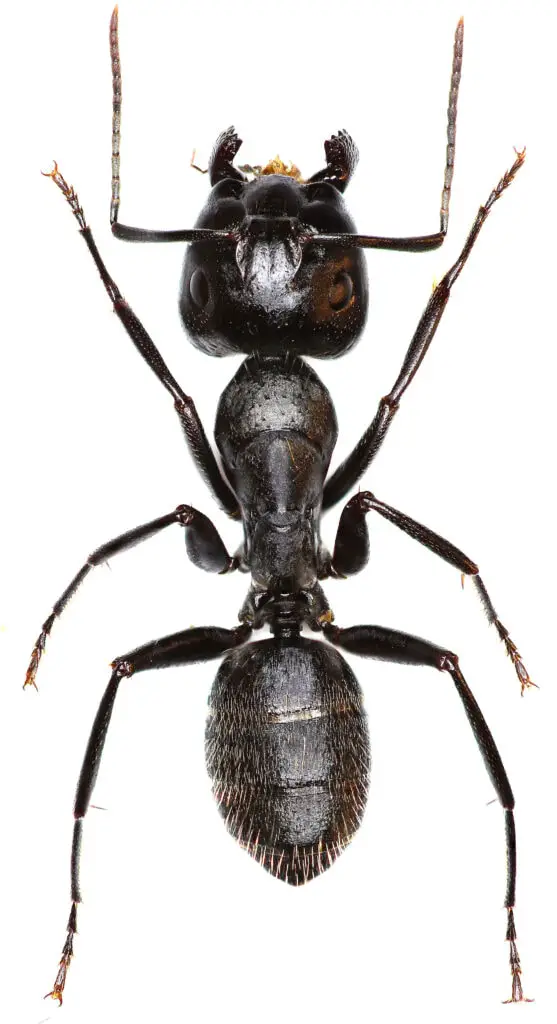
While you probably won’t find them sold in most pet stores, you could always try online to purchase a colony.
These ants are usually tough to capture, and due to the size and complexity of their nests, finding one in a mound is very difficult.
If you do want to keep wood ants as pets, remember that due to their size, they will need a large formicarium built out of wood.
You won’t be able to set up the satellite nests that we referenced earlier, but you still could supply tree stumps, tree limbs, or decayed wood to make your carpenter ants happy.
Remember, carpenter ants do not eat wood, they just create nests in it.
Carpenter ant workers are some of the hardest working ants and it’s super easy to control carpenter ant workers in your nesting sites.
Can wood ants cause damage if you keep them as a pet?
Yes, wood ants can cause damage if you keep them as a pet and they find a way out of the formicarium.
Otherwise, just like any other pet, they will live a long fruitful life.
Carpenter ants are one of the worst pests to have, as they can ruin the structure of your home.
If you do decide to keep these ants, make sure they do not get out.
Due to the strength of their mandibles, you need to build a very sturdy formicarium.
How to identify Wood Ants
The easiest way to tell the difference between a wood ant infestation and a termite infestation is if there is leftover sawdust. Since termites eat the wood, there won’t be any leftover sawdust material. Wood ants don’t eat it, and will leave it behind as they go deeper into the wood.
While wood ants don’t cause as much damage as termites, they can still really damage your home.
One of the easiest ways to find a wood ant is by searching damp old wood.
Their colonies can be found both outside and indoors.
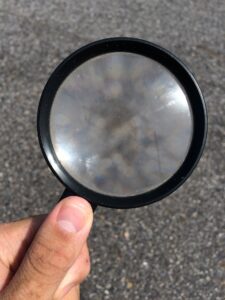
Wood ant nests in the outdoors are generally located in old logs, crumbling fences, or around fuel heaps.
They may burrow into decaying wood by digging into the cracks between the bits of wood.
They will usually build tunnels that run parallel to the grain.
Walls, enclosed spaces, windows, insulators, cartons, doors, and garage doors are places where wood ants can be discovered indoors.
How long do wood ants live?
The lifetime of wood ants is often mentioned on the web, although it should be regarded as a guess by hobbyists: The queens have an 8-year lifetime.
Workers have a lifetime of about a third of that.
it takes 5 to 6 weeks for wood ants to transform from an egg into an ant, which is much longer than a fire ant.
Where can Wood Ants be easily found?
Wood ants may be found all over Europe, except for the southernmost portions.
The wood ant has a wide range of habitats, from the center of Northern Europe all the way to Mongolia in the east.
Wood ants are incredible, but if you were looking for an easier intro to the hobby, check out this guideline: Beginner Friendly Ant Keeping Guide
